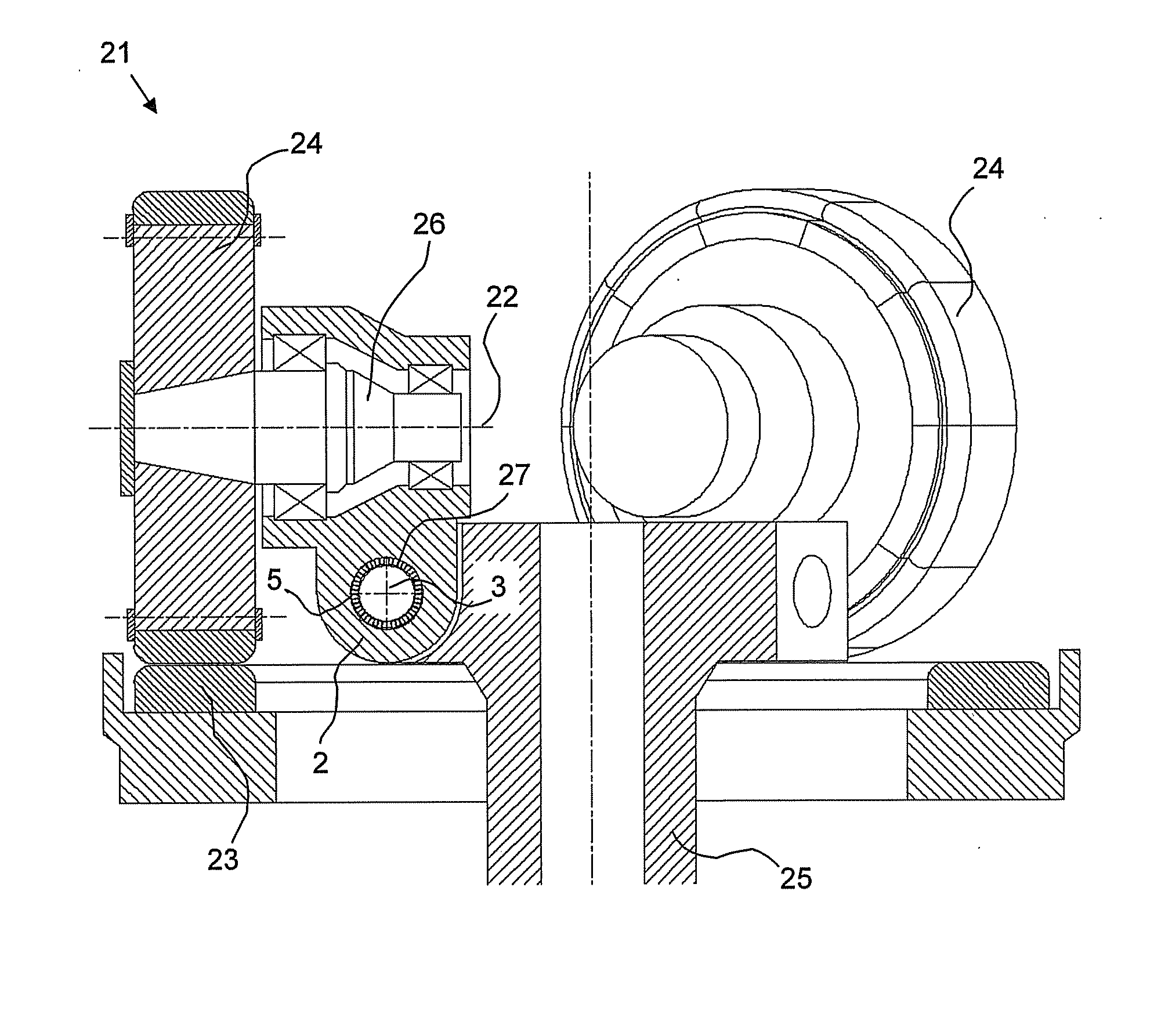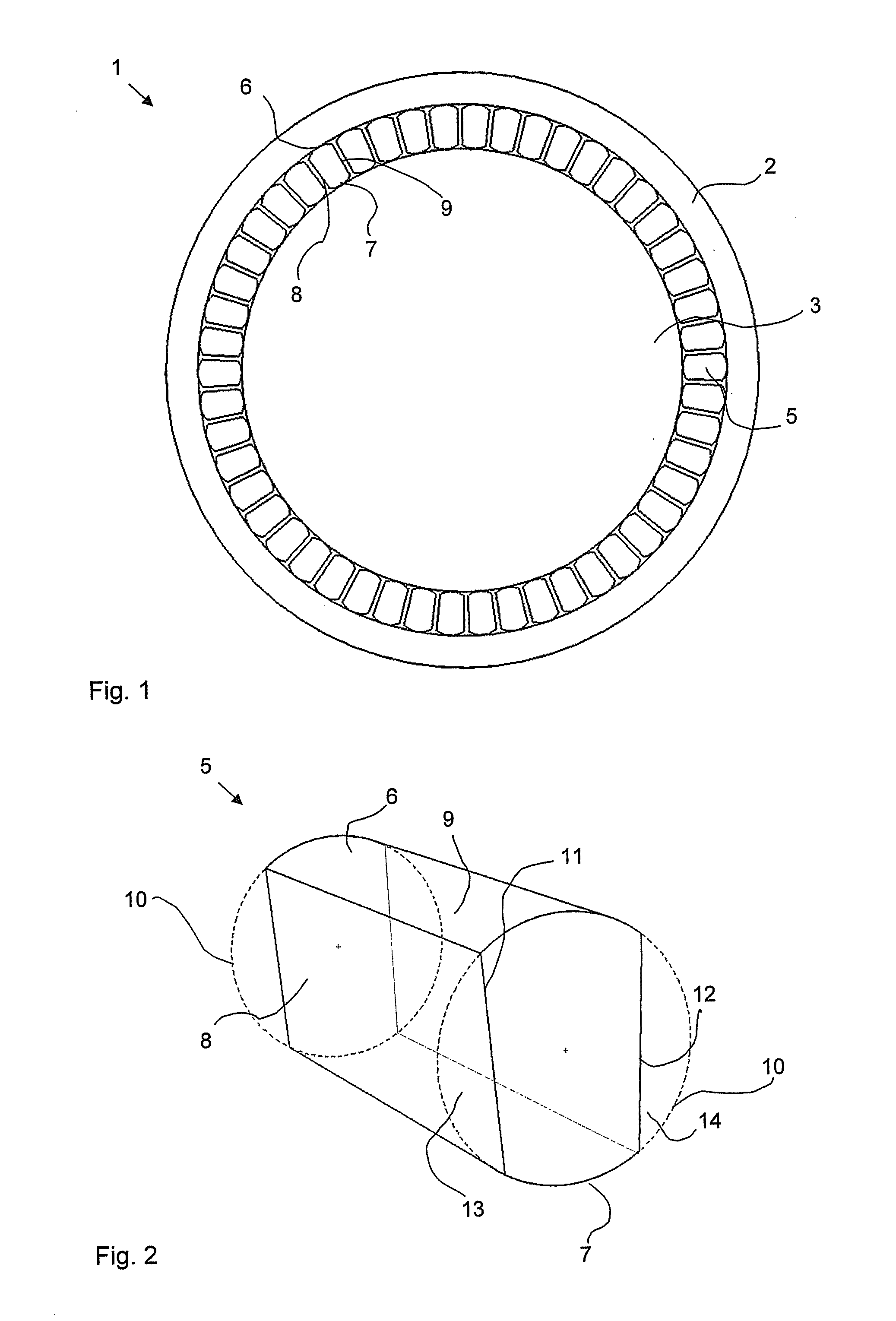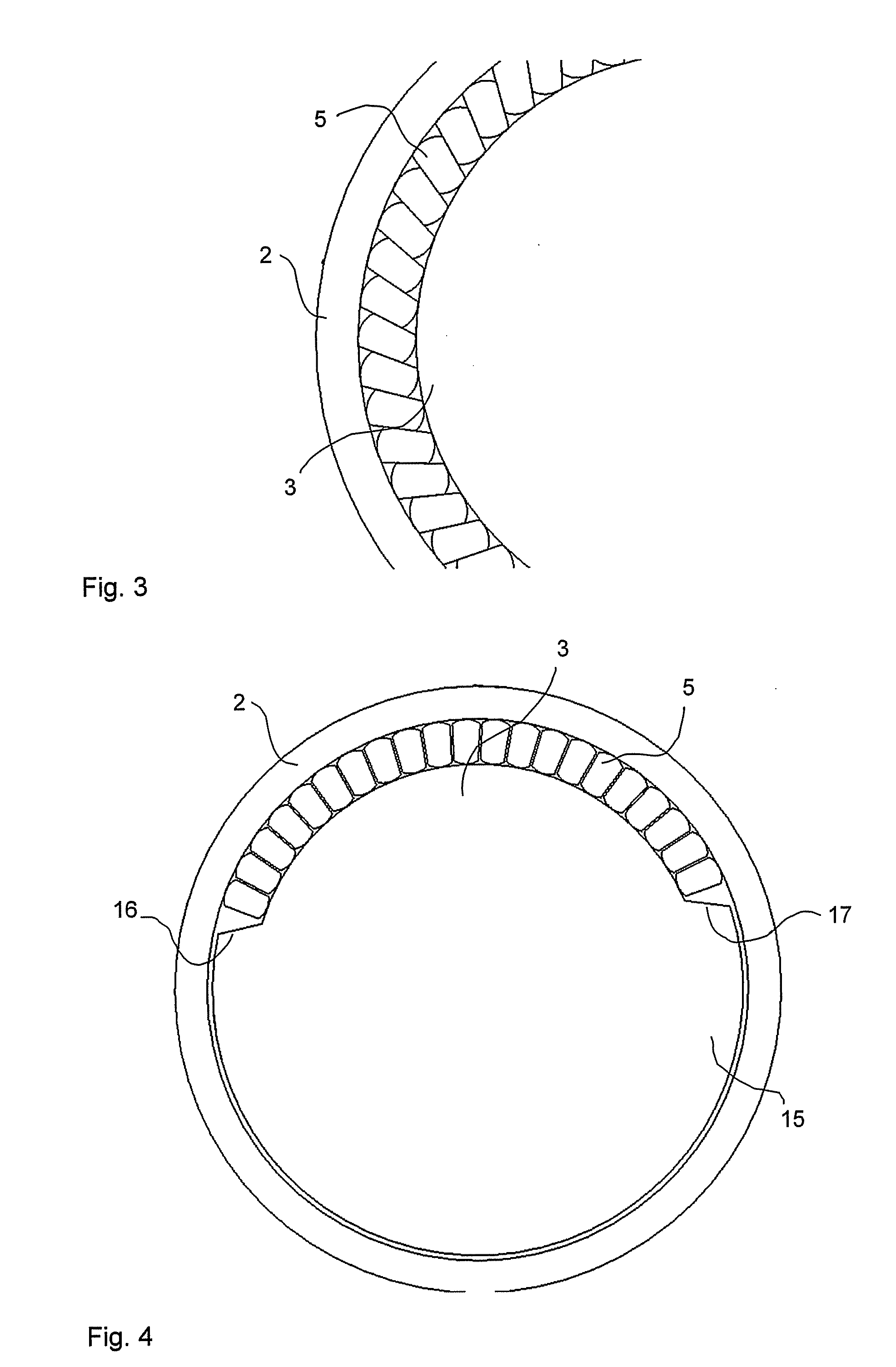Rolling Bearing
- Summary
- Abstract
- Description
- Claims
- Application Information
AI Technical Summary
Benefits of technology
Problems solved by technology
Method used
Image
Examples
Embodiment Construction
[0020]In FIG. 1 is seen a rolling bearing 1 according to the invention which comprises an outer circular part 2, an inner circular part 3 and a number of rolling elements 5 which are fitted between the outer part 2 and the inner part 3.
[0021]As is best illustrated in FIG. 2, the rolling elements 5 in the shown embodiment of the invention are formed as rods, each of which comprises four side faces 6, 7, 8 and 9, of which two opposite faces are curved side faces 6 and 7 which constitute arc lengths of the same imaginary circle 10, and which in the rolling bearing forms contact surfaces with the outer and the inner circular part 2, 3, respectively, and of which the two other opposite side faces 8 and 9 lie within the mentioned imaginary circle 10, being plane and facing respective adjacent rolling elements 5 as shown inter alia in FIG. 1.
[0022]Viewed cross-sectionally, each of the plane side faces 8 and 9 describe a chord 11, 12 in the imaginary circle 10. With reference to FIG. 2, the...
PUM
| Property | Measurement | Unit |
|---|---|---|
| Fraction | aaaaa | aaaaa |
| Width | aaaaa | aaaaa |
| Area | aaaaa | aaaaa |
Abstract
Description
Claims
Application Information
 Login to View More
Login to View More - R&D
- Intellectual Property
- Life Sciences
- Materials
- Tech Scout
- Unparalleled Data Quality
- Higher Quality Content
- 60% Fewer Hallucinations
Browse by: Latest US Patents, China's latest patents, Technical Efficacy Thesaurus, Application Domain, Technology Topic, Popular Technical Reports.
© 2025 PatSnap. All rights reserved.Legal|Privacy policy|Modern Slavery Act Transparency Statement|Sitemap|About US| Contact US: help@patsnap.com



